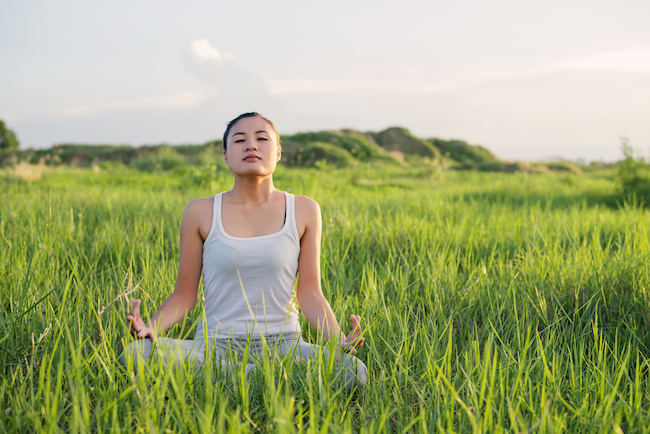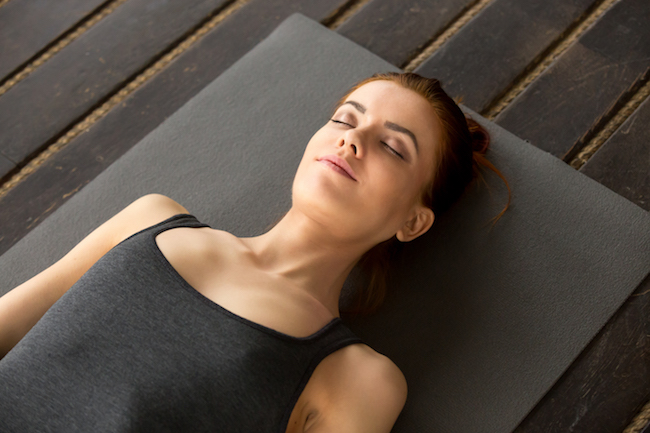Does Yoga Improve Breathing?
As a yoga therapist and teacher, I work with people who seek yoga for their physical, mental, and emotional well-being. One of the questions I get asked very often, especially from those living in cities, is – does yoga improve breathing.
Breath is an integral part of the practice of yoga. Many of Hatha yoga’s practices are aimed especially towards improving the quality of breath and maintaining the health of the respiratory system. Studies have shown that those who practice yoga even for a few weeks show significant improvement in their breathing habits, oxygen intake, and lung function. It is therefore safe to say that yoga does improve breathing.
This article talks about the ways in which yoga improves breathing and positively affects respiratory health. It also shows the benefits of yoga for those who are challenged by a respiratory condition.
How does yoga improve breathing?
Breathing exercises in yoga, known as pranayama, involve abdominal, thoracic (chest breathing), and clavicular breathing.
Using the abdomen, ribs, chest, and collarbones, helps in expanding these regions and maximizing inhalation and exhalation.
Practicing breathing also helps to correct poor breathing habits and gain control of the breath.
Yogic breathing exercises help to promote the health of the respiratory system by improving the strength and flexibility of the chest muscles and fascia.
They also improve the alignment of the ribs and spine.
They challenge the diaphragm by engaging it in exercises that extend the length of the inhalations and exhalations and that involve holding the breath after inhalations and suspending the breath after exhalations.
Standing yoga poses help to strengthen the back muscles, the same muscles that are used to keep the back straight during a meditation or breathing practice. They also increase oxygenation and lung capacity.
Those who suffer from respiratory conditions experience associated stress. Yogic breathing exercises help calm the nervous system thereby lowering stress which is particularly helpful for such people.
For breath is life, and if you breathe well you will live long on earth – Sanskrit Proverb

7 ways in which yoga improves breathing
Here are 7 ways yoga can increase breathing:
1. Increases vital capacity
Vital capacity is a measure of the maximum amount of air that can be exhaled from the lungs. It is especially important for those who suffer from lung disease, heart problems, and asthma.
Studies have shown that yoga poses, yogic relaxation, and yogic breathing techniques can significantly improve vital capacity, even for those with asthma, heart conditions, and lung ailments, and for those who smoke.
2. Improves functioning of the lungs
Yogic breathing exercises help improve symptoms in patients with mild to moderate asthma, along with improving the functioning of their lungs.
Yoga asanas and breath awareness combined with breathing techniques in yoga can help those with shortness of breath, wheezing, or a chronic cough by improving breathing efficiency and decreasing inflammation.
A daily practice of yoga helps in strengthening the muscles of the chest and boosting oxygen intake.
It helps in keeping the lungs healthy and strong thereby improving breathing and oxygen intake.
It also helps in activating the air cells of the lungs, which further strengthens the lungs.

3. Maintains good respiratory health
Practicing yoga poses and breathing exercises maintains the health of the respiratory system.
Yoga poses that engage the spine create more movement in the spine, which stretches and strengthens the muscles of the upper torso. These in turn support the respiratory system by keeping the respiratory muscles strong and flexible.
There are yogic breathing exercises that work specifically on the breathing muscles like those that involve lengthening the inhalation and exhalation or rapid inhalations and exhalations. These further go on to keep the breathing muscles active and strong.
A regular practice of these techniques can increase the intake of oxygen by up to five times.
This not only increases the efficiency of the respiratory system but also helps with problems like sinus, asthma, hay fever, shortness of breath, and allergies.
Yoga poses support the respiratory system by expanding the lungs and giving them space to breathe.
Poses that involve backbends open up the chest region, which relaxes the muscles that are tight in that area.
They also open up new space in the lungs that was previously not accessible due to factors like bad posture, physical and emotional stress, or environmental factors.
When the breath wanders the mind also is unsteady. But when the breath is calmed the mind too will be still, and the yogi achieves long life. Therefore, one should learn to control the breath – Svatmarama, Hatha Yoga Pradipika
4. Reverse changes that negatively impact your ability to breathe
Factors like aging, injuries, and habits can bring changes to the body that negatively impact the body’s ability to breathe. These changes can also be structural changes to the muscles and fascia of the chest as well as the corresponding part of the spine.
Yoga poses combined with breathing exercises can reverse these changes by improving the flexibility and strength of the respiratory muscles and fascia, improving posture by strengthening the spinal muscles, and creating more movement in the spine and chest by stretching those muscles.
Specific yoga poses can also be used to target problem areas.
By including more back bending poses it is possible to reduce rounding of the spine behind the chest area.
There are also poses that can strengthen the weak chest muscles around the lungs.

5. Changes unhealthy breathing patterns
Over time, stress or even unhealthy breathing patterns can cause holding excessive tension in the abdominal muscles, which affects the way one breathes.
Practicing breathing exercises creates more mindfulness about particular breathing patterns and helps to identify areas of improvement.
An example of unhealthy breathing patterns is chest breathing. There is no movement of breath in the belly and all movement is restricted to the chest.
In normal, healthy breathing, there is a rise in the belly on inhalation and relaxing back of the belly on exhalation.
Another example is reverse breathing in which instead of the belly expanding on inhalation it actually collapses in. On exhalation, the belly, instead of relaxing back, rises.
6. Rests the respiratory system
Relaxation techniques in yoga provide the much needed time to the respiratory system so it can rest and repair.
Because the body does not need much oxygen in a state of relaxation, the lungs and respiratory system get a break to heal from any problems.
Yoga is extremely beneficial for reducing stress, which, in turn, strengthens the immune system.
This lowers the chances of getting infections of the entire respiratory tract, including the nose, mouth, chest, and lungs.
Yoga also helps to reduce stress and anxiety experienced by those who struggle with breathing problems.
As a result of stress management, the mind becomes quieter, emotions become calmer, and the respiratory system finds more rest.

7. Improves breathing capacities
The way the body normally operates, there is a lesser amount of blood that circulates in the upper parts of the lungs and chest, and a much greater amount in the lower parts of the lungs.
Yoga can help reverse this.
In yoga poses that involve inversions and lying down, the blood in the lungs draws more oxygen from the inhaled air. Blood flow can even increase by up to seven to eight times in the upper parts of the lungs and up to two to three times in the lower parts of the lungs.
This significantly improves the functioning of the lungs and hence, breathing capacity.
“Breath is the thing that connects us to the entire biome.
If you think of the Earth as a living organism, the Earth does something very beautiful and complementary to us: It inhales carbon dioxide and exhales oxygen, which is why we have this very beautiful oxygen-rich atmosphere.
And we, in turn, inhale oxygen and breathe out carbon dioxide. The exact opposite process.
So there’s this complementary pattern where we breathe in what the Earth breathes out. When we breathe out the Earth breathes that back in again. And this process of breathing in oxygen into our bodies is a process of transformation.
We are literally breathing the outside into ourselves.” – Charlie Knoles, meditation teacher
Conclusion, does yoga improve breathing?
Yoga, by making the breath central to its practice, brings much more focus and attention to the way we breathe.
Mindfulness itself significantly helps to improve breathing.
Yogic breathing and yoga poses are designed to strengthen the respiratory system and can even cure problems in this area to a great extent.
By integrating yoga into your daily life, it is possible to breathe better and, thus, live better.
Read also:

